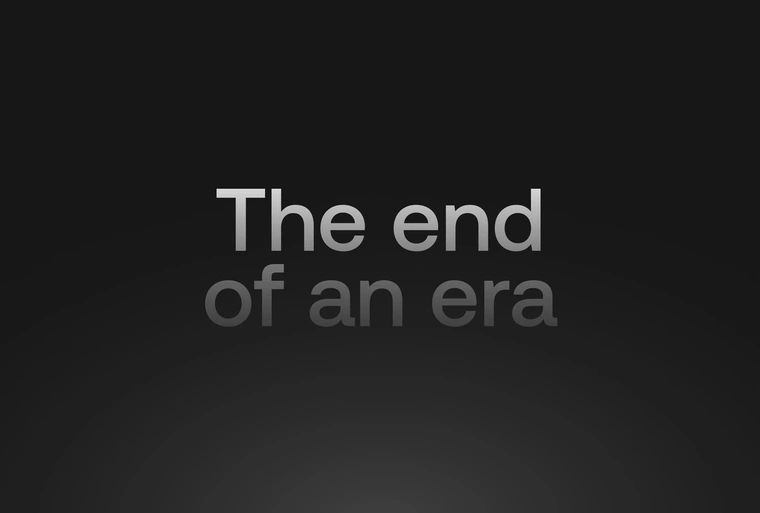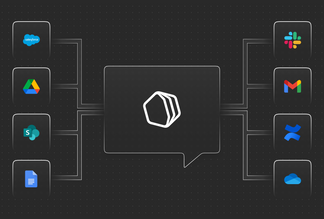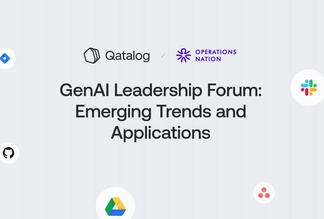
The end of an era
Your business is unique. The products, customers, employees, structure, industry, markets, processes, goals, communication style - everything is distinct. But the software tools you use to do your jobs are not.
And you’re using hundreds of them. Research suggests your company of a few hundred people is using 89 apps on average, up 24% from 2016. And if you work in a larger company of 2,000 people or more, it’s almost twice that. No wonder it often feels so hard to keep up with the endless stream of notifications.
Software bloat is running out of control, with a sprawl of generic tools, and the customer has been overlooked. We've created endless iterations of spreadsheets and documents for almost every problem, but none of these tools reflect the way our business actually thinks or operates. We need to take a step back and consider and empower how an organization actually functions in order to better serve our customers.
The problem is so pervasive that we are almost desensitized to it. It’s as if we have forgotten that digital technology was meant to make our lives easier. Make no mistake, today’s software often feels like forcing square pegs into round holes.
For starters, each piece of software brings an entirely new set of terminology into your business’ lexicon, which you’re now forced to use. Is it a board or a workspace? A database or a dashboard? An interface or a channel? The list goes on. Then it shoehorns a bunch of processes and structure into the way your team operates, with a completely different way of organizing your work. This often triggers the following sequence:
- Adoption is limited - Some people in the team struggle to get their head around the new tool. Although they have had some training, there are new words for everything, redesigned processes, and additional information required. It doesn’t feel intuitive at all, so they just stop using it and carry on as before.
- Workarounds are created - Although ‘X tool’ has most of the functionality required, it becomes clear that it’s missing a few important capabilities, so another tool is needed to fill the gap. Some kind of workaround is created where information has to be copied manually from one place to another. It just about works, but the process has now become clunky and crucial information is often lost.
- Back to square one - The combination of weak adoption and broken processes starts to hurt productivity and damage team morale. The intended goal of improving efficiency seems like a distant memory and the concern amongst management is that it’s having the opposite effect. 12-18 months later, after a huge investment of time and money, they scrap it and look for an alternative.
It’s a cycle that is repeated over and over, as companies search in vain for a workable solution but all the while, their software subscriptions keep rising. It’s astonishing really, because all the companies we speak to want to reduce the number of tools they use. The first reason is obvious. Paying for hundreds of software subscriptions is insanely expensive. But the second reason is arguably even more costly, and that’s the enormous hit to productivity and employee experience.
This was laid bare by a recent study of a Fortune 500 company which revealed that its employees were switching applications and websites 1,200 times each day on average. It estimated this took two seconds each time, equivalent to just under four hours a week, or 9% of their annual time at work. As the study describes, “for most employees, there isn’t an obvious way to avoid ping-ponging between documents, websites, and apps — it’s just how the work has to be done”.
This echoes the findings from our own research with Cornell University. We found that employees are wasting an hour every day trying to find information hidden within apps, and 43% say they spend too much time switching between them. All of this context switching slows us down, but it also makes it harder to focus and, over time, increases our stress levels.
There is a clear paradox here. The very tools that were supposed to make us more productive are doing the opposite.
A failure to innovate
All of this points to why work often feels so broken. We’re using a stack of generic tools, all patched together, to run entire companies. You might think this represents a failure of leadership or management. I believe it represents the abject failure of the technology industry to innovate, because businesses have been left without a viable alternative.
We’ve created thousands upon thousands of apps and tools developed to solve specific problems, with zero regard for the bigger picture and how all these disparate pieces join together. Instead, we have focused on making incremental improvements, whether it’s a slightly better document editor, a task management tool with barely distinguishable feature set, a marginally more functional sheet, or a new take on messenger apps. Huge amounts of brain power, capital, and effort, but the net result is stagnation.
To give customers what they deserve with the technology we have at our disposal, we need to think bigger.
Qatalog 2.0 is launching on December 6. Follow our team on Twitter for the announcement.



